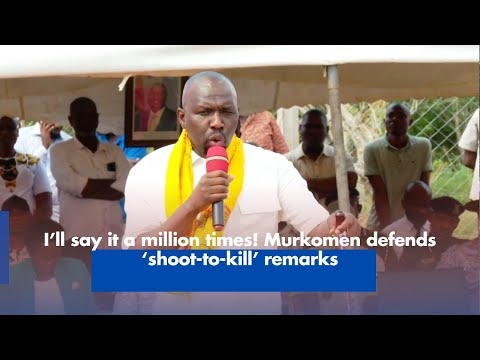The recent sentencing of a 27-year-old man by a Busia court to 31 years in prison or a fine of Sh30 million for child trafficking, shows how this inhumane act is against the law and human rights.
In the past few years, cases of child trafficking cases have been increasing at an alarming rate. It has now become a worldwide concern.
In Kenya, cases of disappearance and abduction of children have been increasing in Nairobi, Kisumu and Mombasa.
Most victims have landed in neighbouring countries for domestic servitude and sexual exploitation as well as forced labour, begging and forced marriage.
The African child trafficking market has become so complicated, making it difficult for authorities to track down these syndicates of cartels and get to the root of the matter.
According to the Awareness Against Human Trafficking report, only two per cent of trafficked Kenyan children ever make it back home.
In Africa, Kenya has the highest level of child trafficking. It has received the Tier 2 designation for human trafficking.
This ranking refers to countries that are not fully compliant with the standards for eliminating human trafficking but are making efforts towards compliance.
Hosting approximately 470,000 refugees and asylum seekers, Kenya exposes these people to a higher risk of exploitation and child trafficking since their security is compromised.
In these refugee camps, limited access to education and livelihood opportunities makes the children vulnerable to abuse and exploitation.
There has been a surge in illegal recruiters who make fraudulent offers of employment in the Middle East and Asia to deceive migrants, thus entrapping them, and oftentimes their children, on the trafficking web.
These desperate people often end up in the hands of malicious employers who subject them to abuse and forced labour without considering their rights, some of them die in the Arab countries.
According to the BBC’s Africa Eye, the Kenyan government does not have sufficient reports or accurate national surveys on child trafficking in the country. Agencies are under-resourced and understaffed for successful tracking of missing children in the black market.
The US Department of State’s 2019 Trafficking in Persons Report on Kenya also noted that NGOs have affiliated with Kenyan authorities to assist with providing services to victims such as medical care, psychosocial counselling, rehabilitation and reintegration support, basic needs, legal aid and transportation.
In some cases, NGOs acted alone when the government’s commitments became irresponsible or reluctant.
With these concerning statistics, it is crucial to bring awareness to these issues and create a judicious plan to put an end to child trafficking in Kenya.
The government should be backed up by efforts from organisations to ensure that child trafficking in Kenya is eradicated for good.
Edited by Kiilu Damaris










![[PHOTOS] Boniface Kariuki honoured with flag-draped coffin](/_next/image?url=https%3A%2F%2Fcdn.radioafrica.digital%2Fimage%2F2025%2F07%2Fc7df13cc-0b58-4ec7-b6a4-7e32e1d9ec63.jpg&w=3840&q=100)
